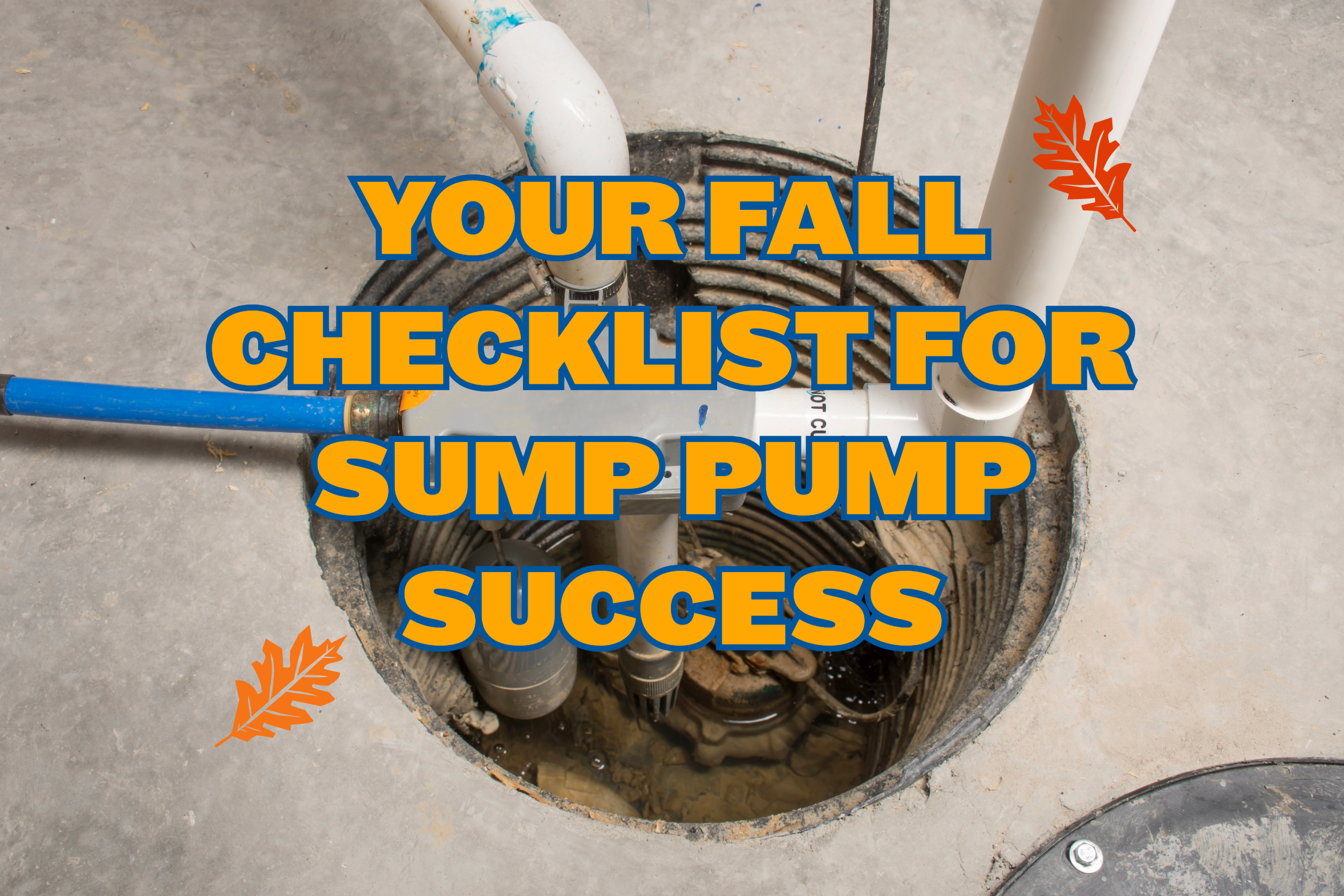Sump pumps are a year-round necessity, but their importance becomes even more pronounced during the autumn and winter months, particularly in regions that contend with cold weather and snowfall. This means that for us homeowners in Ohio, ensuring the proper care of sump pumps is essential. So, to assist you in preparing your sump pump for the approaching colder season, here’s a comprehensive fall checklist from your experts at Gahanna Plumbing & Drain:
YOUR FALL CHECKLIST FOR SUMP PUMP SUCCESS:
- 1 – Remove the Pit Cover: You can start your fall sump pump maintenance by taking the lid off the sump pump’s pit and peeking inside. Gently remove the cover to gain access to the interior. Should you find any debris, mud, or rocks, gently remove them from the pit. Keep in mind that the presence of foreign objects of this nature can obstruct the sump pump, potentially leading to overflows.
- 2 – Examine the Drain Hose: Thoroughly assess the condition of the drain hose. Verify that it is securely connected and free from obstructions or ice buildup, particularly as winter approaches. A blocked or frozen drain hose can cause your sump pump to run continuously, as it hampers effective water discharge.
- 3 – Inspect the Inlet Screen: Next, you should ensure the inlet screen is free from blockages to facilitate the proper entry of water into your sump pump’s pit. A blocked inlet screen can impede water access, posing a risk of your basement flooding.
- 4 – Evaluate the Float Mechanism: Another good idea is to confirm that the float mechanism within your sump pump is operating smoothly. The float is what dictates when the pump activates to remove excess water. Therefore, it’s wise to verify that the float component moves without obstruction. A malfunctioning float can result in operational failures or lead to continuous running of the sump pump, potentially causing damage to the pump’s engine over time.
- 5 – Check the Discharge Pipe: Monitor the direction of water discharged by your sump pump to ensure it flows safely away from your home. When you hear your sump pump in action, take a moment to inspect the discharge pipe’s exterior location. Verify that it directs water to a safe distance from your dwelling. If the discharge point is too close, there’s a risk of water re-entering the pump, leading to continuous and inefficient operation. Excessive pump operation can increase the likelihood of premature wear and tear, potentially shortening its lifespan. Additionally, while it is essential to maintain an adequate distance from your home, outbuildings, or other structures, it is equally important to ensure that the discharge remains within your property boundaries. Avoiding the discharge of excess water onto neighboring properties is crucial to prevent inconvenience to your neighbors.
- 6 – Perform a Test Run: Activate your sump pump by adding a bucket of water to the sump pit. Carefully observe its performance to confirm efficient water removal. If the pump fails to operate, check its power source connection and the condition of its power cord.
- 7 – Prepare for Unforeseen Events: Consider the installation of a backup battery or generator, especially in anticipation of severe rainstorms coinciding with power outages. Having a contingency plan in place provides peace of mind, ensuring your sump pump continues to function effectively even during unexpected events.
By diligently adhering to this fall maintenance checklist, you can enhance the winter readiness of your sump pump system, safeguarding your home from potential water damage during the colder months.
Should you encounter any issues with your sump pump or require professional assistance, do not hesitate to contact Gahanna Plumbing & Drain today at (614) 245-2256 or schedule an appointment online now by clicking here! Our team is dedicated to providing expert solutions to protect your home and plumbing systems.




